
A ten-minute drive to the west of the Gretna Green Weddings tourist attraction, on the Scottish border with England, is the unusually named The Devil’s Porridge Museum. It tells the story of HM Factory Gretna, the largest munitions factory of World War I, and the 30,000 people who worked there – of whom 70 percent were women. The ‘Devil’s Porridge’ was the nickname given to the explosive mixture that was used in the manufacture of artillery shells.
Working in a munitions factory was hazardous. Handling acids, chemicals and volatile materials meant that the potential for accidental explosions was a constant threat. Nitric acid fumes posed one of the greatest risks to health, and the acid could turn the women’s skin a yellowish tinge. The workers handling these TNT explosives, which caused their skin to turn bright yellow, earned the moniker ‘Canary Girls’.
By the spring of 1915 it was obvious that the war was not going to be over quickly. The British Army was losing key battles because of a lack of high-explosive artillery ammunition. This led to what was called the ‘Shell Crisis of 1915’, or the ‘Shells Scandal’, and after the shortage was reported by The Times and the Daily Mail newspapers, questions were asked in Parliament. Chancellor of the Exchequer David Lloyd George and the newspapers’ owner Lord Northcliffe worked together to try and force Parliament to adopt a national munitions policy with central control. This resulted in Lloyd George being appointed minister of munitions. He created a series of new munitions factories to supply the soldiers and artillery guns on the front line with the ammunition they needed. Before the war there were three national factories producing ammunition; by 1916 there were 150.
Esta historia es de la edición Issue 116 de History of War.
Comience su prueba gratuita de Magzter GOLD de 7 días para acceder a miles de historias premium seleccionadas y a más de 9,000 revistas y periódicos.
Ya eres suscriptor ? Conectar
Esta historia es de la edición Issue 116 de History of War.
Comience su prueba gratuita de Magzter GOLD de 7 días para acceder a miles de historias premium seleccionadas y a más de 9,000 revistas y periódicos.
Ya eres suscriptor? Conectar

NAUMACHIA TRUTH BEHIND ROME'S GLADIATOR SEA BATTLES
In their quest for evermore novel and bloody entertainment, the Romans staged enormous naval fights on artificial lakes
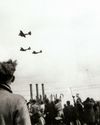
OPERATION MANNA
In late April 1945, millions of Dutch civilians were starving as Nazi retribution for the failed Operation Market Garden cut off supplies. eet as In response, Allied bombers launched a risky mission to air-drop food
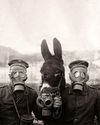
GASSING HITLER
Just a month before the end of WWI, the future Fuhrer was blinded by a British shell and invalided away from the frontline. Over a century later, has the artillery brigade that launched the fateful attack finally been identified?
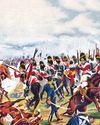
SALAMANCA
After years of largely defensive campaigning, Lieutenant General Arthur Wellesley went on the offensive against a French invasion of Andalusia

HUMBERT 'ROCKY'VERSACE
Early in the Vietnam War, a dedicated US Special Forces officer defied his merciless Viet Cong captors and inspired his fellow POWs to survive
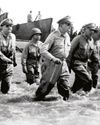
LEYTE 1944 SINKING THE RISING SUN
One of the more difficult island campaigns in WWII's Pacific Theatre saw a brutal months-long fight that exhausted Japan’s military strength

MAD DAWN
How technology transformed strategic thinking and military doctrine from the Cold War to the current day
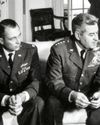
BRUSHES WITH ARMAGEDDON
Humanity came close to self-annihilation with the Cuban Missile Crisis, Broken Arrows’ and other nuclear near misses
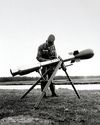
THE DEADLY RACE
How the road to peace led to an arms contest between the USA and USSR, with prototypes, proliferation and the world’s biggest bomb

THE MANHATTAN PROJECT
Einstein, Oppenheimer and the race to beat Hitler to the bomb. How a science project in the desert helped win a war